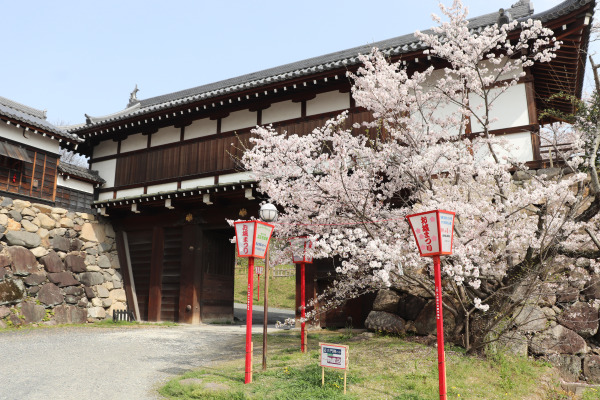Yamato Koriyama Castle: The Ruins of Nara’s Largest Castle
Dating back to the Sengoku Period, Yamato Koriyama Castle ihas been able to preserve many of its moats and trenches, as well as its unique walls. To top it off, Koriyama Castle’s large number of cherry blossom trees make the castle grounds truly breathtaking every spring.
Exploring Yamato Koriyama Castle
Koriyama Castle is easily accessed from Kintetsu Koriyama Station, which is just a 10-minute walk away from the castle. You can even get a glimpse of the castle from the train.
From the entrance of Yanagisawa Shrine, it takes only a few minutes to reach the main keep. Just walk north from the station of pass through Tetsugomon Gate. For the best experience, make your entrance through Ottemon Gate— the main entrance to the castle.



There are numerous towers around Otemon Gate. There are multiple connected turrets surrounding the main gate, creating the impression that the castle is well-defended against intruders.

After Oda Nobunaga seized control of the Yamato region in 1580, Tsutsui Junkei built Koriyama Castle.
Toyotomi Hideyoshi’s brother Hidenaga was the one who laid the groundwork for Koriyama to flourish as a castle town. After expanding the castle grounds in 1585, the town really began to prosper with the arrival of Yanagisawa Yoshiyasu, an agent of the Tokugawa shogunate. During the Edo Period Koriyama hub for trade and commerce.
However, Koriyama sustained serious damage during World War II and required a lot of repairs. Despite this setback, the town has survived and is still thriving.



If you go to Koriyama Castle during the cherry blossom season, the area near Otemon Gate is quite stunning. A path runs alongside the castle moat as well. By the moat, there are so many sakura blossoming. Having access to both the castle and the sakura at the same time is really fantastic.




Once you cross Gokurakubashi Bridge, and pass Yanagisawa Shrine, (which enshrines Yanagisawa Yoshiyasu) you will reach the site of the former main keep!

The Keep
Regrettably, the keep of Koriyama Castle is no longer standing, but a portion of the keep’s stone wall is still standing. Though it might not seem like much, you can find one of the most interesting features of the castle: its stone walls.
While he was finishing the expansion of Koriyama Castle, Hidenaga ran out of materials. In order to complete the project, he sourced stones from wherever he could get his hands on them. His solution involved using Buddhist gravestones and even jizo statues! This technique, called tenyo-seki, is very uncommon and there are few places you can find them. Actually, Koriyama Castle, along with Fukuchiyama Castle, offers the best examples of tenyo-seki in all of Japan.

For a long time, historians believed that Koriyama Castle did not have a main keep at the beginning. This was due to the absence of photos, paintings, or mentions of it in historical writings. However, recent excavations of foundation stones have revealed that the castle did indeed have a six-story keep.


Although the keep is no longer present, the area where it once stood is now an observation deck that offers a breathtaking view of the entire Nara basin. It’s possible that the old warlords who occupied this castle kept a close watch on the large temples from this vantage point to prevent any rebellions against the government.



Leave a Reply